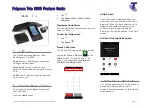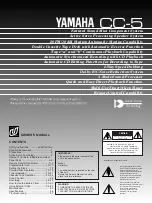
9-19
Cisco TelePresence System Release 1.6 Administration Guide
OL-13676-05
Chapter 9 Troubleshooting the CTS 3010 and CTS 3210
Managing Hardware Setup
Related Information
For more information about setting up and testing speakers, see the following documentation:
•
Cisco TelePresence System 3010 Assembly, Use & Care, and Field Replacement Unit Guide
•
Cisco TelePresence System 3210 Assembly, Use & Care, and Field Replacement Unit Guide
•
For more system troubleshooting information, see the
Cisco TelePresence System Troubleshooting
Guide
on Cisco.com.
Testing Microphones
The microphones are set up successfully when each microphone registers sound. You must supply sound
at each microphone to complete this test. The number of audio meters that are shown on the test screen
is determined by the number of microphones that have been configured in Cisco Unified
Communications Manager (Cisco Unified CM) and the version of Cisco Unified CM that you are
running.
The Microphone Troubleshooting screen displays the number of microphones available for testing:
•
CTS 3010—3 microphones. 1 audio meter is displayed per microphone, one on each of 3 test
screens.
•
CTS 3210—6 to 9 microphones, depending on your configuration. 2 or 3 audio meters are displayed
on each of 3 test screens:
–
The top microphone icons represent the microphone in the front row of participants seated in
the room.
–
The bottom microphone icons represent the microphones in the back row of participants seated
in the room.
Go to the following sections to test microphones:
•
Testing Microphones on the CTS 3010 and CTS 3210, page 9-20
Sound is not synchronized with
video.
—
Contact Cisco technical support.
Choppy audio during
double-talk (when both sides are
talking simultaneously).
Audio Echo Canceller (AEC)
very briefly mistakes one of the
speech patterns for noise and
cancels it, resulting in choppy
audio.
•
The audio from the remote
side is slightly attenuated
before it is played out the of
the speaker.
•
The echo cancellation
feature removes some of the
sound from the talkers
during the double talk.
Check whether there has been a change in the echo path
(someone has moved the speaker or microphone, or
maybe a laptop directly in front of a mic). Otherwise,
this is expected behavior. The existing filter parameters
should be enough to cancel out the sound from the
speaker. However, during double-talk, echo
cancellation will always remove some sound from the
talker.
Table 9-4
Troubleshooting Speakers
Problem
Possible Cause
Possible Solution















































